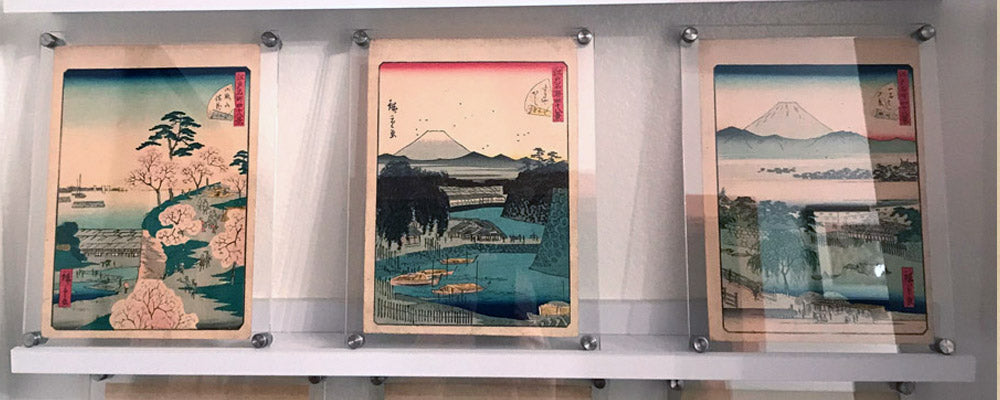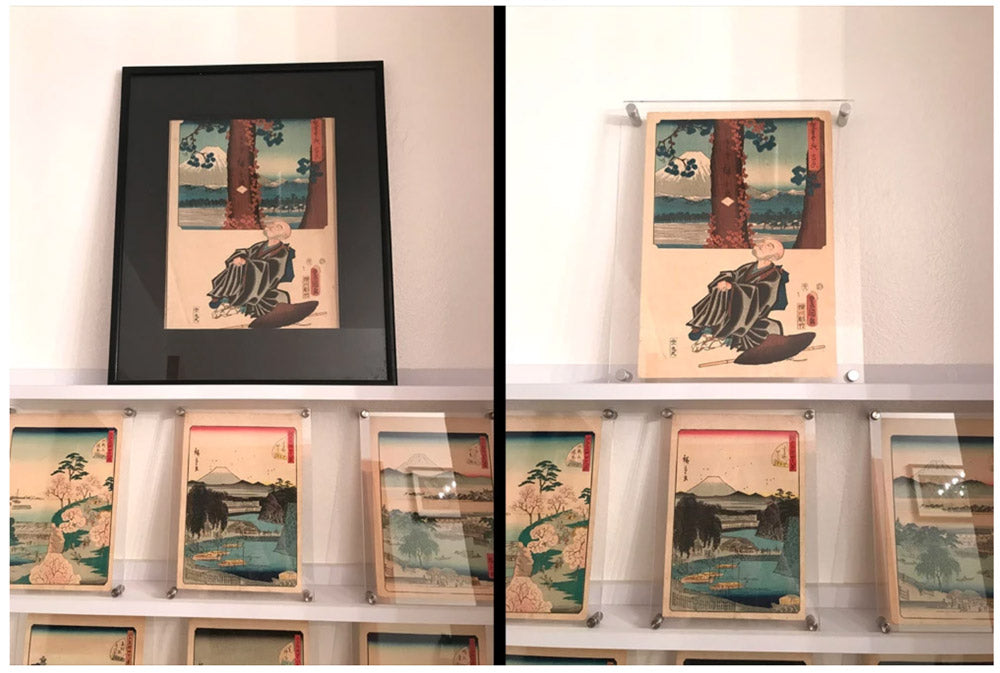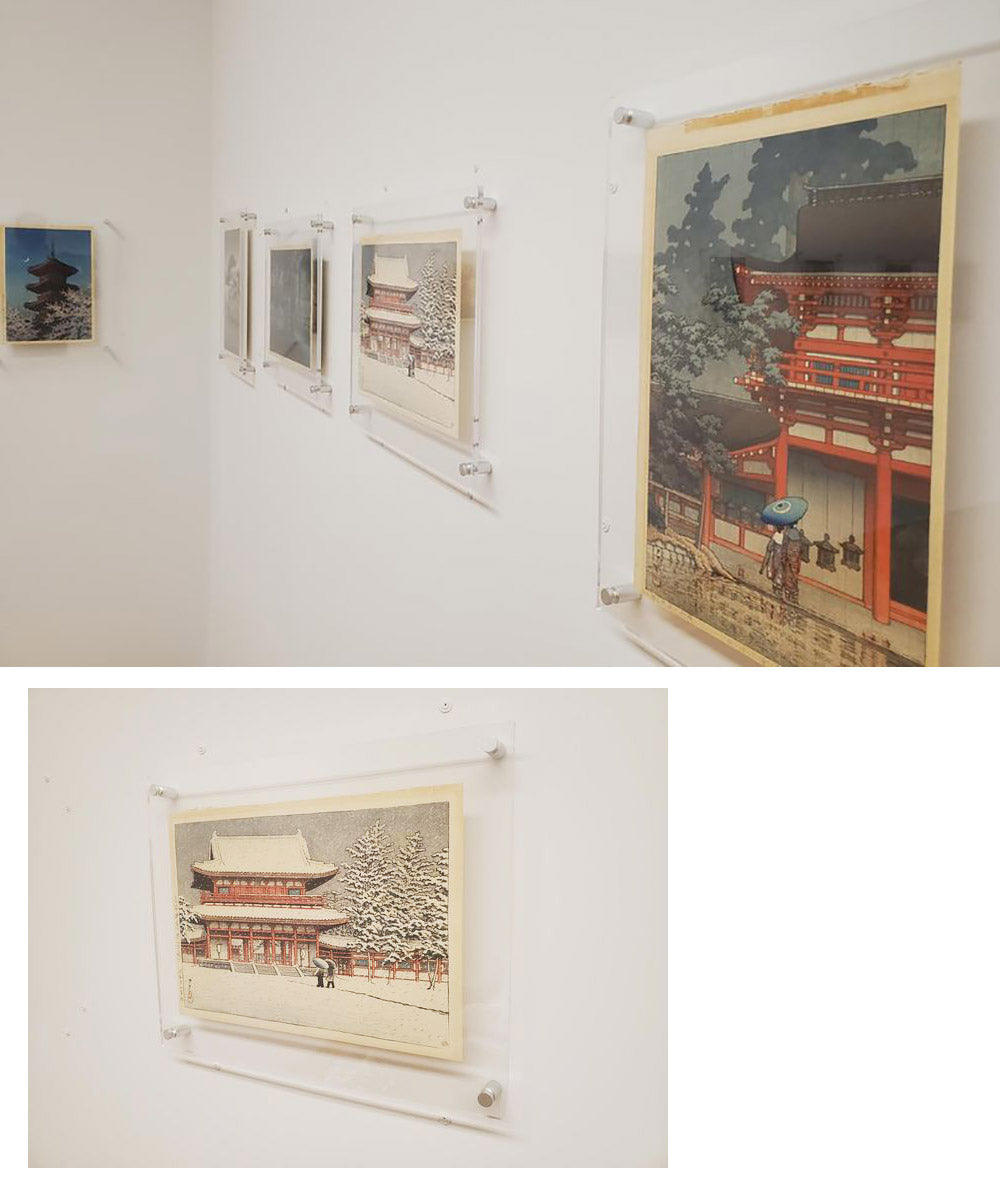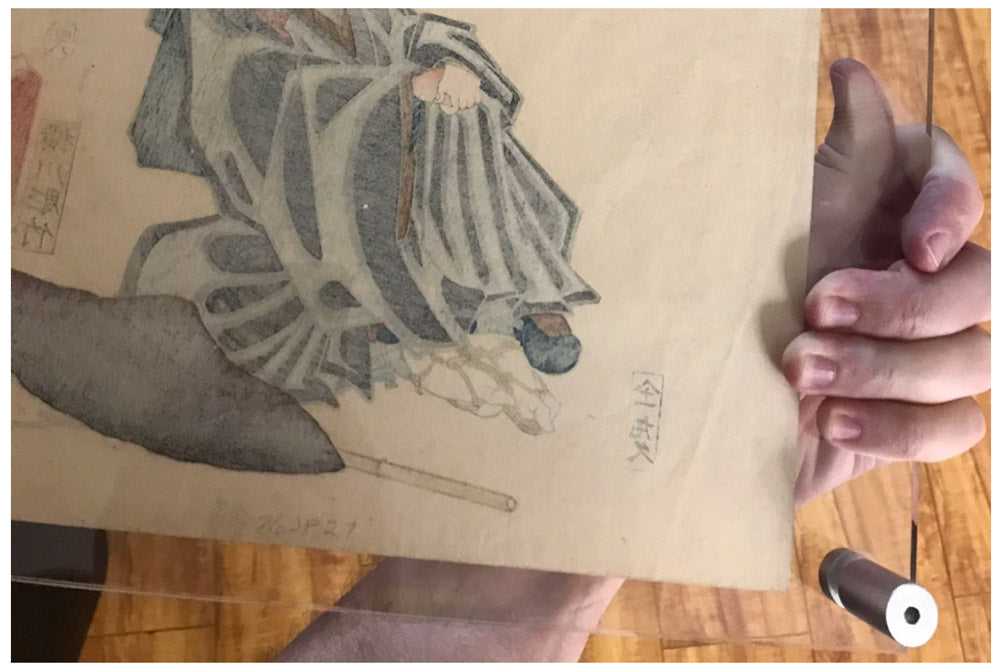
Best Frames for Woodblock Prints?
Share
Acrylic Frames VS Traditional Frames
Note: This is also available as a video on our YouTube Channel.
I have always liked to display art rather than have it tucked away in some dusty portfolio. As print collectors, we learn quickly to avoid acidic papers and mattes, and to keep our prints away from moisture and sunlight. When it comes to Ukiyo-e, I prefer to use clear acrylic frames (Class A - UV resistant) rather than traditional frames with mattes.
See this print below, one of my favorite from the "Twin Brushes" series, in its old frame on the left, and now in it's new frame on the right. I much prefer this modern look. It also takes up less space so I can display 2 prints instead of one.

Below is a gallery show put on by Moonlit Sea Prints. You can see how they utilized the acrylic frames to really show the full print in a clean modern fashion.

In order to not have the print touch the acrylic panel, I add a thin, acid-free tissue to the back of the print (not glued). I also added a thin, acid-free "spacer" to the front of the print to provide some space from the acrylic panel. Below is a step-by-step of my woodblock framing approach.
1) Place acid-free tissue paper on the back of the frame.
2) Place the print on top of the acid-free tissue.
3) Cut spacer strips from acid-free stock and place at the top and bottom of the print.
4) The front of the print.
5) The back of the print.
If you are worried about moisture, it's not hard to put a thin piece of tape around the edge of the frame to seal everything in.


Reasons Why I Think Acrylic Frames Are Better:
Publisher Marks: One of the most important pieces of a woodblock print, besides the design of the print itself, is the accompanying publisher seals, censor seals, date and other writings that are on the outside edges of many prints. Unfortunately some of the original print owners have trimmed these off in order to fit the prints into their albums. But, I contend that if your print does have these marks on the edge, they should be displayed as part of the work, and not covered by some matte or frame. These marks indicate the provenance and history of the print. An acrylic frame is a great way to show the entirety of the piece.
Paper Features: The paper that Ukiyo-e prints are on is Washi. "Until the early 20th century, the Japanese used washi in applications where Western style paper or other materials are currently used. This is partly because washi was the only type of paper available at that time in Japan, but also because the unique characteristics of washi made it a better material."
https://en.wikipedia.org/wiki/Washi
Many times the paper has a visible texture, embossing, variable thicknesses, and other treatments, These are easier to appreciate when both sides of the print are visible. I find the appearance of the back of a print with the bleed through of various ink colors interesting. Also seeing the backside of a print, allows one to see if it's been "backed" by another piece of paper.

Back of the print is easy to see.
Cost: These frames are less than half the price of a traditional frame and matte, especially if you go to a professional framer. I bought my frames on Amazon ( large frames / small frames ) So whereas you might pay $150+ for a traditional frame, matt and framing service, an acrylic frame will cost you less than $50.
Flexibility: Acrylic frames can be used horizontally and vertically, attached to the wall (with screws provided) or freestanding on picture rails or shelves. Plus it only takes a few minutes to switch prints and refresh your display. If you want to frame a triptych, then you will need to separate it into 3 frames since I haven't seen an acrylic frame large enough, although I'm sure you can special order one.
Collectors that prefer the aesthetic of a traditional frame with matte may not like this approach. If anyone has other thoughts on why this approach is a good or bad idea please let me know.
Happy Collecting!